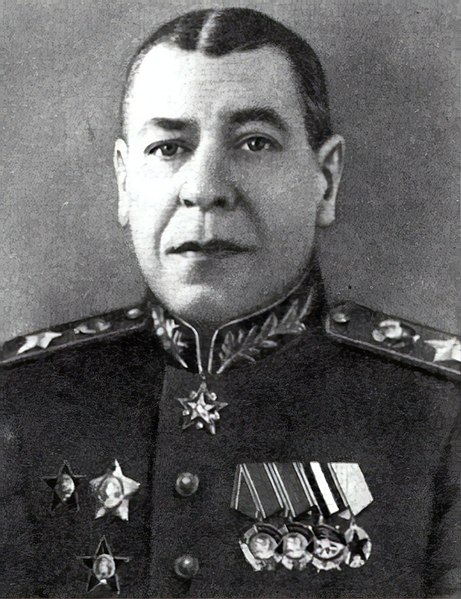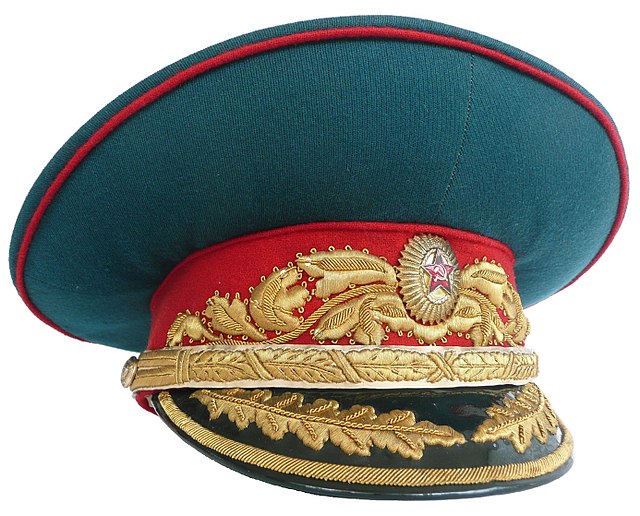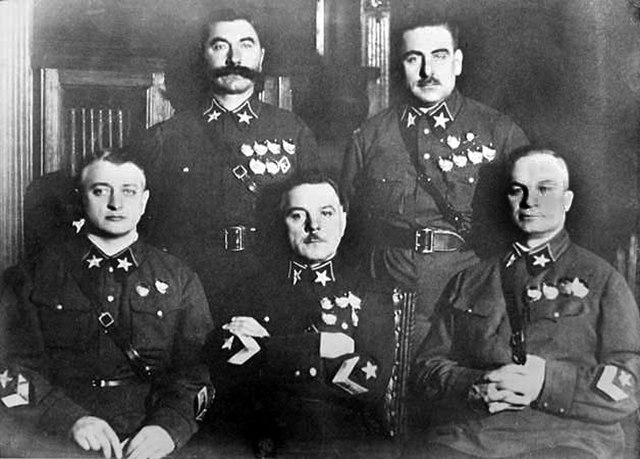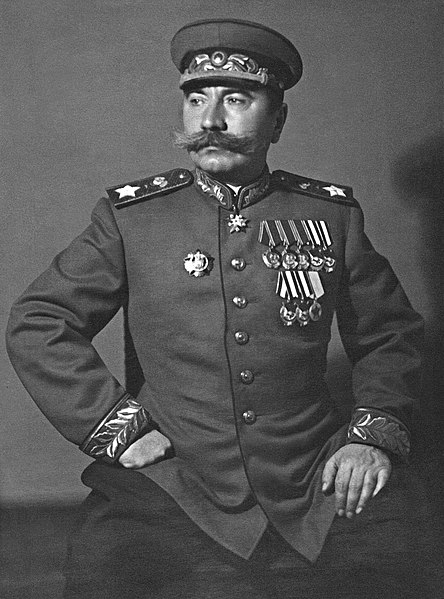Boris Mikhaylovich Shaposhnikov was a Soviet military officer, theoretician and Marshal of the Soviet Union. He served as the Chief of the General Staff of the Soviet Armed Forces from 1928 to 1931 and at the start of the Second World War. Shaposhnikov was one of the foremost military theorists during the Stalin-era. His most important work, Mozg Armii, is considered a landmark in Soviet military theory and doctrine on the organization of the Red Army's General Staff.
Shaposhnikov c. 1944
Shaposhnikov (top right) with other prominent Soviet military commanders, including three future Marshals of the Soviet Union, 1921
Shaposhnikov with Stalin, Ribbentrop and Molotov at the signing of German–Soviet Frontier Treaty on 28 September 1939
Marshal of the Soviet Union
Marshal of the Soviet Union was the second-highest military rank of the Soviet Union. Joseph Stalin wore the uniform and insignia of Marshal after World War II.
Peaked cap 1945–91
The first five marshals of the Soviet Union from left to right: Tukhachevsky, Budyonny, Voroshilov, Blyukher, and Yegorov. Only Budyonny and Voroshilov would survive the Great Purge.
Image: Kliment Voroshilov
Image: Маршал Советского Союза Семён Михайлович Будённый







